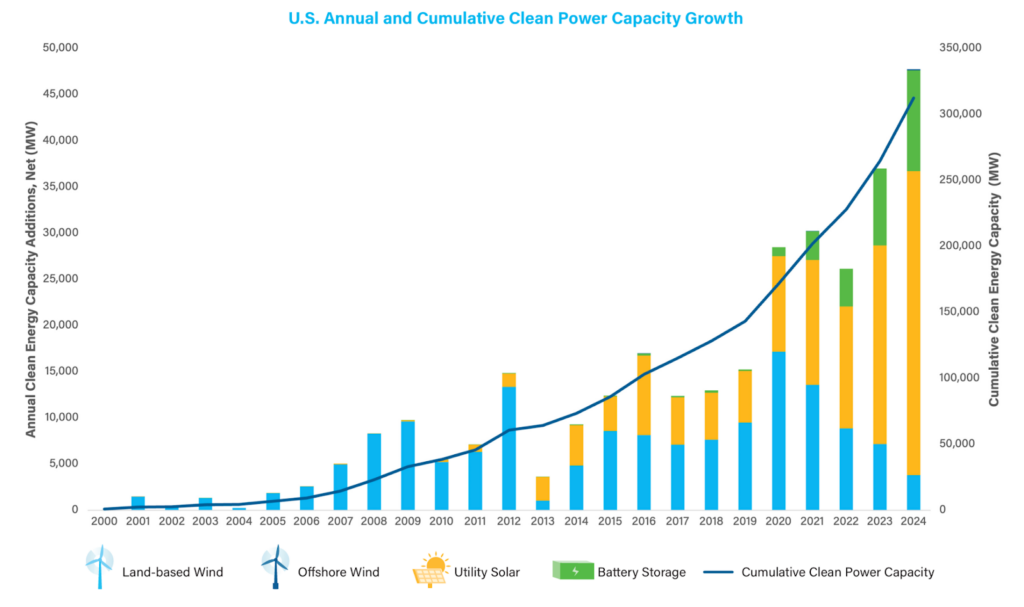What we achieved by passing and protecting the IRA
By Dana Nuccitelli
We’ve been riding a climate policy roller coaster over the past four years. It began with Democrats controlling the House, Senate, and White House in 2021 and crafting a bill that was first called “Build Back Better.” It was initially conceived as a wide-ranging package incorporating both social and climate policies, potentially even including a price on carbon pollution.
But because of Democrats’ razor-thin majority in the Senate, passing the bill proved extremely difficult. After a year-long negotiation, it was whittled down to a smaller package that was renamed the Inflation Reduction Act. The IRA preserved most of Build Back Better’s proposed clean energy incentives, although a price on carbon pollution was unable to get the necessary support of 50 senators. News stories about the bill’s outlook lurched back and forth throughout 2021 and 2022 – one day it was dead, the next it was back on life support.
In order to keep climate policy in the package and ultimately push the IRA across the finish line, CCL volunteers went to work over that year, including holding 920 meetings with congressional offices, generating over 225,000 letters and calls to members of Congress, writing 2,117 letters to the editor, and publishing 676 op-eds. And it paid off! Congress finally passed the bill, and then-President Biden signed it into law in August 2022.
Over its first two-plus years, the IRA spurred hundreds of billions of dollars in clean energy investments and a rapid deployment of projects like solar farms and battery storage facilities. And most of the IRA’s grant and loan funding was successfully implemented. Those successes have already put a dent in America’s climate pollution.
In 2024, many Republicans including then-candidate Trump campaigned on terminating the whole IRA, which they mislabeled “the Green New Scam.” After the November election, they took control of the House, Senate, and White House. And so CCL volunteers went to work again, using data to lobby our representatives to defend the IRA.
Our efforts weren’t in vain. When President Trump signed the Republican budget bill into law on the Fourth of July, it didn’t terminate the whole IRA. Key clean energy tax credits for solar and wind energy were given a short runway before phasing out, and others for battery storage, geothermal, and nuclear power were largely preserved. And Senate Republicans listened to CCL volunteers and rejected the Trump administration’s efforts to throw up further significant roadblocks preventing clean energy projects from qualifying for the remaining tax credits.
This made us wonder, just how much did CCL’s efforts to pass and preserve the IRA’s clean energy tax credits accomplish for the climate?
A billion tons of climate pollution avoided
We don’t want to sugarcoat the difficult situation we’re facing – the big budget bill’s clean energy rollbacks have done a lot of damage, as has the EPA’s gutting of federal climate pollution regulations, which CCL has formally opposed.
But CCL’s work to pass and preserve the IRA’s clean energy tax credits nevertheless made a meaningful difference for American emissions and the climate. For example, many more solar farms and battery storage facilities have come online over the past two years, and will continue to come online over the next several years, than would have without the IRA or our successful defense of some of its provisions.

U.S. clean power generation capacity additions, showing big growth in solar and battery projects since the IRA was passed. Source: American Clean Power
The final budget bill also included provisions to blunt its effect on the rooftop solar industry, compared to earlier versions of the bill.

Projected rooftop solar additions under the IRA (green), the initial proposed House budget bill (red), and the final budget bill (OBBB; purple). Data from Ohm Analytics
After President Trump signed the budget bill into law, his administration tried to throw up more roadblocks to prevent clean energy projects from qualifying for its surviving tax credits. CCL volunteers went to work again, asking our representatives to reject those changes. Half a dozen senate Republicans did just that, and were largely successful.
But how much of a difference did it all make for the climate? To estimate the overall size of the IRA’s impact on America’s emissions, I looked at various emissions scenario projections from the expert energy systems modelers at the Princeton REPEAT project.
The results are illustrated in the chart below. The blue line represents how American climate pollution was forecast to decline if the IRA and EPA regulations had remained intact. The pink line represents the forecast adjusted to reflect the rollback of the EPA’s climate pollution regulations. The red line adds the impact of the big budget bill (OBBB). And the dashed purple line represents what our climate pollution would have looked like had the IRA never become law in the first place.

U.S. climate pollution projections under the scenarios described above. Adapted from forecasts by Princeton REPEAT.
Compared to a world in which the IRA never became law, we’ll save about 1 billion tons of carbon dioxide pollution over the next decade. That’s equivalent to permanently shutting down 26 coal power plants, or taking 23 million cars off the road.
It’s a far cry from the 3 billion tons of climate pollution that would have been avoided had the IRA remained fully intact, or the 7 billion tons had both the IRA and EPA regulations remained untouched. But it’s important to remember that every fraction of a degree and every ton of avoided carbon pollution makes a difference, and CCL’s work helped avoid a billion tons. That matters. Now let’s keep working towards avoiding the next billion tons!





